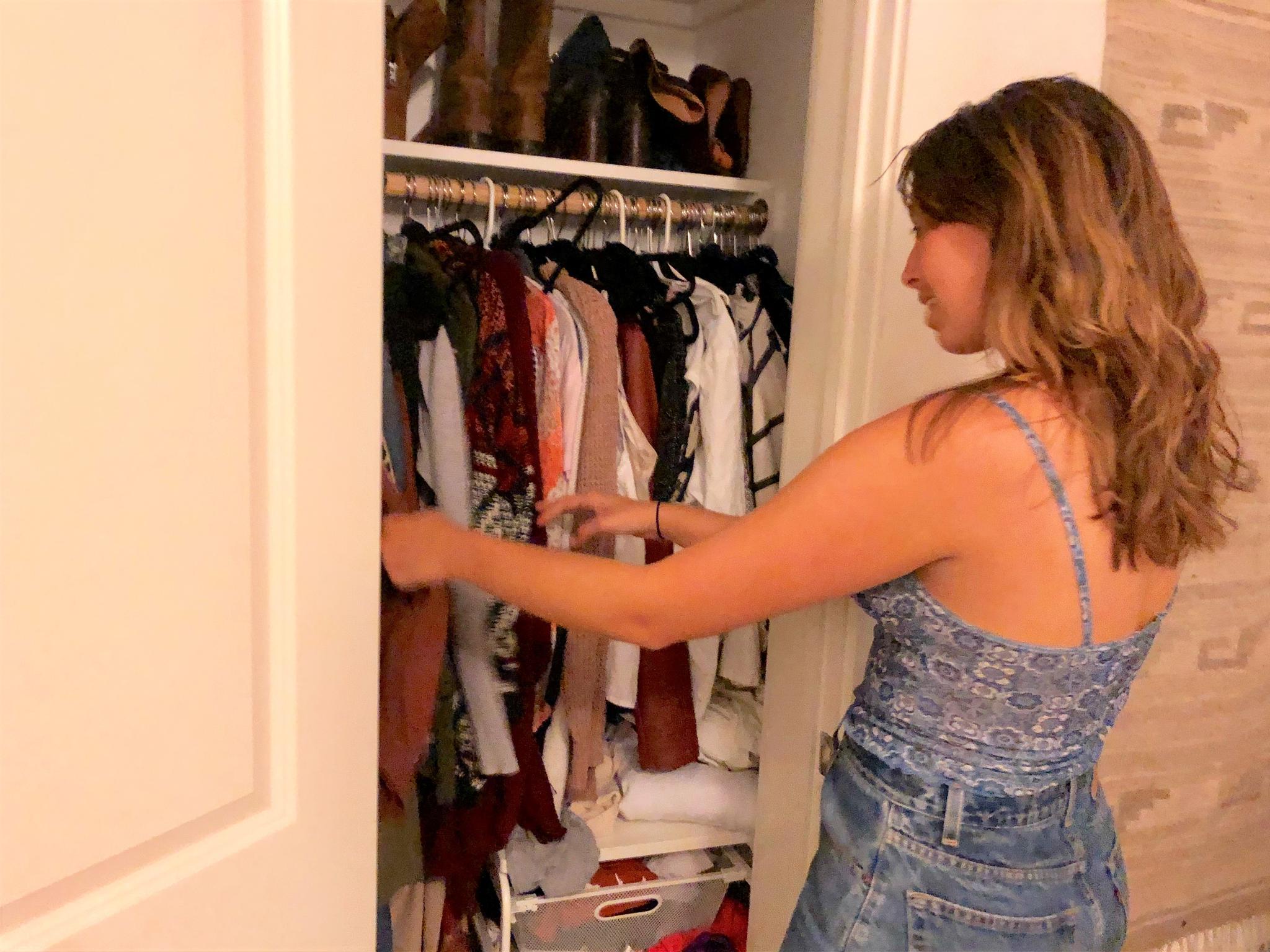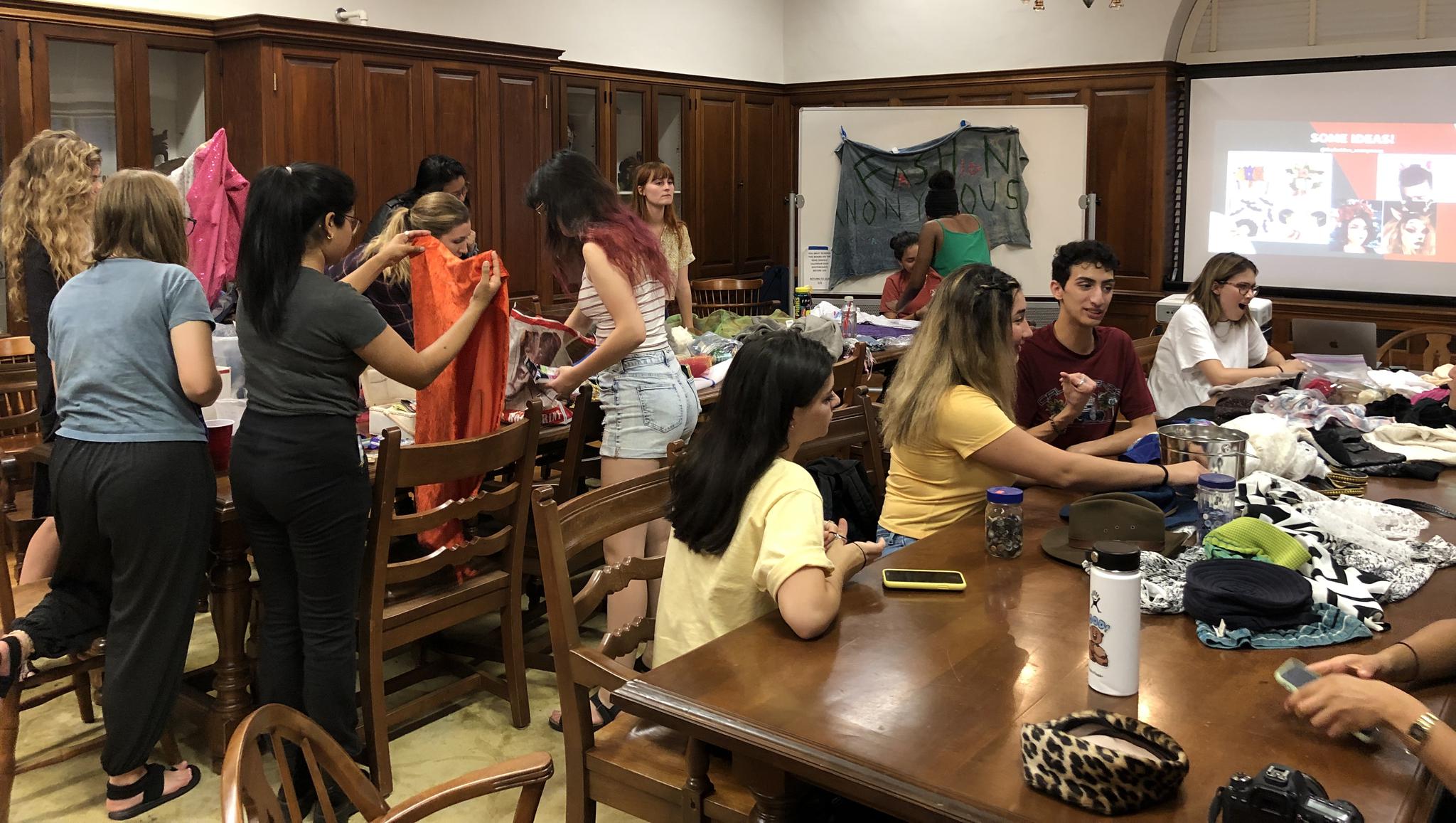Committing to Environmental Change, One Clothing Piece at a Time
Students are ditching fast fashion brands to support the fashion sustainability movement, despite difficulties making the transition.

By Alexis Green
November 7, 2019
Austin, TX -- From funky red cowboy boots to a seventies inspired top that looks as if it was transported from Woodstock, Anna Hutton’s closet is the definition of eclectic. A closer look at the closet tells more than just a story of good style— it shows commitment.

As a New Year’s resolution, Hutton is only buying secondhand or sustainable clothing to avoid supporting what she considers “morally corrupt” fast fashion companies. The student studied the brand Zara while abroad in Spain, diving deep into how fashion companies cheaply produce trendy clothes quickly.
She learned these cheap clothes can come at the cost of the environment. Committing to used clothing would save 25 billion gallons of water and 449 million of waste this year, according to the 2019 ThredUp resale report.
With increasing concern for the environment, Hutton is not the only one turning to resale stores. During the recent Climate Strike, protesters ditched common brands for thrifted pieces.
Keeping with this trend, the ThredUp report showed Gen Z and Millenials are adopting secondhand shopping practices at over twice the rate of other age groups.
“It's kind of a hard thing to do and I'm not perfect at it,” Hutton said. “There are so many layers to sustainability so it's easy to just say you’re sustainable but not actually do the research and practices to be actually sustainable.”
While there is no clear definition for sustainable fashion, the movement aims to shift the industry towards more ethical and environmentally-friendly practices. Sustainability is a hot topic but can be hard to put into practice due to higher prices and having to leave behind familiar brands.
Dorian Kim, the creative director of Fashion Anonymous, a University of Texas student activist organization working to educate people on the impacts of clothing believes helping the environment is “worth” a little inconvenience.
“It can be hectic because we are surrounded by [fast fashion],” Doran Kim said. “By keeping up with our lifestyles, we are destroying something. We are unknowingly harming other people's lives and nature.”
Like Hutton, most of Kim’s clothes are thrifted. As a fashion designer, she only works with used scraps of fabric. With designs featuring vibrant colors and futuristic silhouettes, the artist sees her reliance on recycled material as a challenge that allows her to ethically push style boundaries.

Over 33% of shoppers have switched to supporting brands that take a public stance on environmental change, according to a Pulse of the Fashion Industry report. Additionally, 50% of shoppers plan to start supporting environmentally-friendly fashion brands.
“If I'm in the place to be able to wait a little bit and spend money on something made in an ethical and sustainable way... I'm going to do it,” Hutton said.
Hutton’s commitment goes beyond outwear. She is currently on the hunt for sustainable underwear, setting aside two paychecks to afford one pair. An ethical pair of Jonsey underwear will cost her $25 compared to places like Walmart offering packs for less than $10.
She recognizes the ability to afford expensive pieces and not depend on thrifting for survival as a privilege not many people have.
“It's not accessible,” Hutton said. “It takes time to research companies and make sure what you're getting is actually sustainable, but people aren't in the position if they're making minimum wage or have a family to do the research.”
Hutton recently budgeted for an expensive pair of Outdoor Voices leggings after hearing that they use recycled materials for production. Upon more research, she found the company is not completely fair-trade, claiming they source from vulnerable countries at risk for sweatshop labor.
Companies can sometimes make it hard to tell what is sustainable without doing some digging. Leaving people, like Hutton, with some costly purchase regrets.
“There are people [on social media] that will have a sustainable haul which is a paradox because shopping is not sustainable,” said Anai Moreno, public relations manager of Fashion Anonymous. “There are also companies that will greenwash [by] claiming that something is sustainably produced when it's actually not or it was not ethically made.
Despite the difficulties, sustainability is becoming more than just a buzzword.
Moreno believes wardrobes will naturally become more sustainable over time. By mixing in thrifted pieces or researching, she feels people can take small steps in the right direction.
“It's just a process,” Moreno said. “You shouldn't feel ashamed if you do purchase something every now and then. Just knowing and being more reflective on everything that you do, while not easy, will make you feel better.”
